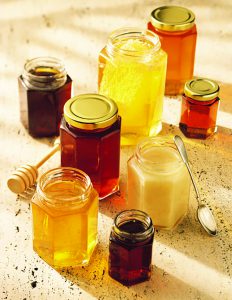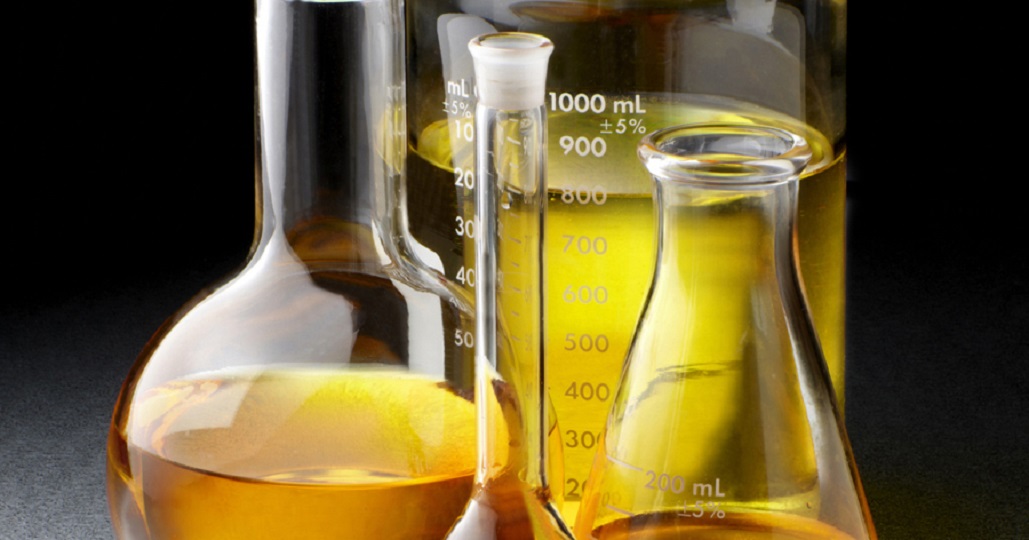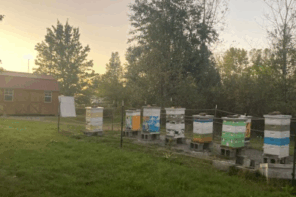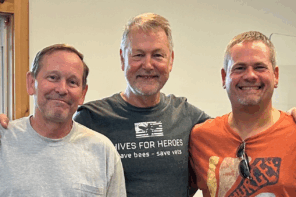South Carolina Statewide Honey Pollen Analysis
By: David MacFawn
In early 2021, South Carolina Beekeepers Association (SCBA) began thinking about conducting a South Carolina statewide honey pollen analysis. Work on the Congaree River basin honey pollen analysis (Melissopalynology) was completed in 2021 and an article was submitted to Palynology.
For the Congaree River basin, we collected fresh honey during 2020 and analyzed the pollen in the honey to determine what nectar sources were contributing to the honey. The Congaree study was extremely successful, and we decided to replicate the Congaree study on a South Carolina statewide basis. South Carolina is the first state to do a honey pollen analysis on a statewide basis to determine what comprises our honey. The analysis will also help determine what to plant in the various parts of the state when bees forage. We will also observe what plants are blooming when we collect the weekly nectar. This will help the universities quickly identify the pollen sources.
Brett Kahley, a district manager for FedEx, was instrumental in setting up affordable shipping to Global Geolab Limited (see next page for full address), for slide preparations before sending the slides to the three U.S. universities for analysis. June Ponder, a long-time beekeeper in the SC upstate, was contacted and agreed to help co-manage the grant. A budget was generated for the SC statewide honey pollen analysis that included pollen analysis at three universities in the United States, labor, and travel. The budget came to approximately $400,000. USDA did not have that much money in their budget for this type of research, so the South Carolina Department of Agriculture was contacted. They had a grant available for $50,000. This meant all the labor and travel needed to come out of the budget, leaving the university the cost of the honey pollen analysis. Rosalind Severt (another Eastern Apicultural Society Master beekeeper and SC Master beekeeper) was consulted, and we decided the study was certainly worth doing. The participants decided to proceed without anyone taking a salary. SCDA was gracious enough to increase the budget to $70,000 to use mainly for university analysis. So, we had our funding, and the budget was approved at the end of September 2021. Travel expenses were covered by David MacFawn. The sales of his three published books defrayed the costs (Outskirts Press in Parker, CO, Amazon, Barnes & Noble, and Books a Million).
We had a chart of blooming plants in SC that was between 50 and 75 years old. This chart was defined using anecdotal information. Pollen analysis of the honey would be much more accurate, and the Congaree study identified multiple additional nectar sources contributing to the Congaree honey. To date, 19 out of 20 honey collectors have been lined up and we are in discussions for the remaining honey collector.
Project Goal
The South Carolina Beekeepers Association will select 15 local bee associations, resulting in 20 collection locations throughout the state of South Carolina (15 rural and five urban). These are based on the six SC ECO Regions collecting honey samples weekly during the nectar flow and check/collect nectar as available during the nectar dearth’s for honey pollen analysis to determine:
• when and which plants typically bloom
• what the nectar sources are for honey in particular areas of the state
• if maples that bloom at the end of January/early February are both a pollen source and honey/nectar source
The honey samples will be analyzed for pollen at universities throughout the United States and one or more articles will be published with the results. Replicating this study in the future will help determine changes to the SC ecosystem.
Project Workplan
07/2021 – 12/31/2021 Define primary and backup beekeepers who will collect honey from 15 local SC associations for 20 sites. Determine to which university each honey collection site will send its honey samples.
01/2022 – 12/2022 Collect honey from colonies during the nectar flows and check/collect nectar as available during the nectar dearths.
06/2022 – 01/2023 Process the honey samples.
01/2023 – 05/2023 Generate data reports.
05/2023 – 12/2023 Generate articles for journals.
12/2023 – 9/2024 Publish results online and in a book available to the public.
We have organized and identified the names, USPS mailing addresses, email addresses, and latitude/longitude of the honey collectors’ bee yards. Starting in mid-January 2022, each of the honey collectors were contacted weekly to discuss what is blooming and their honey collection. Hive scales (BroodMinder purchased through Betterbee), specimen containers, and hive tools were purchased for all the sites. The material was mailed to the beekeepers in December 2021 to ensure they could start their work in January 2022.
During a nectar flow, the bees will stop taking sugar syrup if you are feeding it in favor of fresh nectar. If you believe you are in a dearth (between when the maples bloom and the Spring nectar flow starting in March/April in South Carolina, or the Summer dearth starting end of May into June in most parts of the state) and are feeding sugar syrup, you can tell if it is fresh nectar by doing the following:
• turn the comb upside down and if “nectar” shakes out, it is fresh and has not been cured by the bees
• if you are feeding sugar syrup and the bees are still taking the syrup, this is syrup, and you should not take a sample
• if you are feeding sugar syrup and the bees are not taking the syrup this is fresh nectar and you should take a sample
Several things will contribute to the success of our honey grant project:
– Collect honey samples weekly during the nectar flows. Collect honey samples for two weeks when the maples bloom and collect honey samples during the Spring nectar flow. There usually is a dearth in most areas in South Carolina between the maple bloom and the Spring flow during which we will not collect samples.
– Collect samples around the brood nest during the maple bloom and in the upper part of the super stack during the Spring flow.
– Check for fresh nectar when we believe there is a Summer dearth in most parts of the state. The upstate/mountains may be the exception with the Sourwood flow. If there is not any fresh nectar, do not collect samples. Be careful if you need to feed sugar syrup; it may appear to be fresh nectar, but it is syrup. If the bees are taking the syrup, do not take samples. If there is fresh nectar coming in, the bees will not take the syrup. Given the cost ($115 to chemically process to see the wall structure of pollen grains and analyze a sample, and we are on a budget), even though there are 25 samples available per site, we will only take 18 to 20 samples for the entire year. We need to have extra funds left to publish a very thorough book.
– It is very important to write the date the sample was taken on the label provided before placing the label on the specimen jar. This date is how we are going to track when during the flow the sample was taken.
– I will email/call the honey collectors weekly starting toward the end of January/first of February 2022.
The purpose of the contact is to discuss any questions and for me to collect information for our SCDA quarterly report.
There is usually a dearth after maples bloom until the main flow starts. So, in your area start going into the hive two weeks before you expect your normal flow. Look for bees flying with intent, fresh nectar in the comb, whitening of comb edges due to fresh wax, and increase in hive weight. Sample weekly during the flow until the Spring flow ends. The hive scale should help determine when the flow is over.
Check the hives during the Summer dearth for fresh nectar and sample accordingly. Do NOT take all supers off in Summer and start feeding during the dearth.
Sample during any Fall flow up to the first frost. We are trying to save work and expenses, so only take samples when there is fresh honey in the hive. It costs $115/sample to process the honey.
Bees store surplus honey above the brood nest. They typically store surplus nectar beginning in the center of the super and store outward as the nectar flow proceeds. When the super is full except around the outermost frames, the beekeeper adds another super. It is critical that the beekeepers sample honey from the outermost frames of the top honey super. How quickly the superframes are filled is a function of the number of bees in the hive and how strong the flow is. Also, I used supers with all drawn comb, not supers with foundation or foundation frames interspersed with drawn comb. The rule of thumb is it takes 8.4 pounds of honey to produce a pound of beeswax if the wax cells need to be drawn out from the foundation. Hence, honey may be impacted if drawn comb or just foundation is used. For plastic foundation, the plastic should be coated heavily with beeswax to get the bees to draw out the plastic foundation. The bees use the beeswax on the plastic foundation to assist them in drawing out the cells.
Hive Scale: The goal of the hive scale is to detect when nectar flows are occurring, and the hive is gaining weight. The nectar collector can move the scale to another hive in the same bee yard if the current colony swarms, dies, etc., so they can detect nectar flows.
We have three universities doing the analysis (University analysis subcontracts: Morehead State University, Dr. Jen O’Keefe; Louisiana State University, Dr. Sophie Warny; C & S Science Consulting, Dr. Carol Wymer). Mail samples approximately every other month starting the middle of May. Each specimen must be labeled with the hive’s latitude/ longitude, date sample taken and your name so we can keep track of the samples during lab processing.
Send your sample to:
Global Geolab Limited
729B 15 Street S.W.
Medicine Hat, AB
Canada T1A 4W7
Printed shipping labels will be provided.
Log of Honey Sample Dates and Blooming Plants
You may log blooming plants even when samples are not taken as indicators that hives are not producing honey. Try to take samples the same day of the week if possible. For example, avoid collecting on Saturday and then the Monday right afterward. That said, it is better to do it that way than to skip a week in a honey flow. The weather may alter the schedule. We will write another article in about a year to update you on our preliminary results. A book with the findings will be compiled and published by Clemson University Press and be made available to both the South Carolina beekeepers and the public.
Log Layout
2022
WEEK DATE Sample Taken Plants Blooming
Jan Wk1 _________________ _________________________________
Jan Wk2 _________________ _________________________________
David MacFawn (dmacfawn@aol.com) is an Eastern Apiculture Society Master Beekeeper and a North Carolina Master Craftsman beekeeper living in the Columbia, South Carolina area. He is the author of three books:
Applied Beekeeping in the U.S. https://outskirtspress.com/appliedbeekeepingintheus/
Beekeeping Tips and Techniques https://outskirtspress.com/BeekeepingTipsandTechniquesfortheSoutheastUnitedStatesBeekeepingFinance
Getting the Best from Your Bees https://outskirtspress.com/gettingthebestfromyourbees











